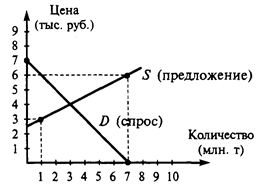Feudalism
At first sight, feudal Europe was full of states and mini-states, rather than stateless. Did not England, France, Poland and other familiar states already exist in this period – accompanied by extra ‘players’ on the international scene like Burgundy, Saxony and Venice? The appearance of kings, dukes and doges on the scene would seem to indicate the presence of strong centralized decision making institutions for these territories. The similarity of names with institutions and territories of later periods may be quite misleading. Outside of England and France it soon becomes clear that the idea of a number of territories each with its own legal jurisdiction is quite inappropriate. This is clearest in the area that was misleadingly called the Holy Roman Empire (accurately described as neither ‘Holy’, ‘Roman’ nor an ‘Empire’ by Voltaire [1694–1778]). The ‘Holy Roman Emperor’ was the nominal supreme ruler of kingdoms, dukedoms, sovereign bishoprics, independent or federated cities and the like. His powers over each were different and ill-defined. The heads of some of these territories had the power to elect the emperor’s successor. The Catholic Church, in the shape of the pope, claimed powers over the emperor and his ‘vassals’ (those who had sworn allegiance to him), which in later times were felt to be ‘sovereign’ prerogatives. Equally the Church claimed exclusive jurisdiction over all the clergy and many matters of family law – as well as rights to censorship and the levying of separate clerical ‘taxes’. In some cases independent kingdoms such as France and Spain held territory within the Empire as nominal vassals of the emperor or some other ‘ruler’. Law enforcement and defense were the subject of a patchwork of rights and privileges, the consequence of a pyramid of personal relationships between lords and vassals. Each vassal, in turn, was lord to an inferior group of aristocrats. At the aristocratic level the possession of land entailed the notion of government. In principle, in the early feudal period, land could only be held by those prepared to administer and, most importantly, defend it. Hence only adult fighting men could hold land. If, for instance, the king gave land to a duke, the only way the duke could hope to hold it was by subcontracting the administration and defense of much of it to a group of earls or counts. Each earl or count, in turn, would obtain the allegiance of knights to hold particular manors, or fortified villages. One consequence of this is that the same area would be under the control of a king, a duke, a count and a knight. The Church would also claim jurisdiction in some cases. In practice lords were interested primarily in matters relating to their feudal dues – the equivalent of modern taxation and rents. Thus it is clear that in the feudal period, as in tribal stateless societies, conflicts over the allocation of resources could be resolved; communities could make decisions about their defense and economic welfare; but no effective and centralized state machinery existed to carry this out.
1 Give Ukrainian equivalents for the following words and expressions. Duke, doge, misleading, dukedoms, bishopric, pope, censorship.
2 Translate words and word combinations from Ukrainian into English and use them in your own sentences. Феодальний лад, юрисдикція, васал, оподаткування, маєток, лицар, розподіл ресурсів.
3 Complete the sentences. 1. The Catholic Church... 2. Outside of England and France... 3. If, for instance, the king... 4. In some cases... 5. The Church would also claim... 6. Each earl or count... 7. Equally the Church...
4 Comprehension questions. 1. What kind of state structure existed in the time of feudalism? 2. What distribution of power was characteristic of the Roman Empire? 3. Who was the head of the Roman Empire? 4. What was the role of the Roman Catholic Church in the Roman Empire? 5. How were law enforcement and defense organized in feudal states? 6. What kind of taxes existed in feudal states and who levied them? 5 Say if the following statements are true according to the text. 1. England, France, Poland and other familiar states already existed in feudal period. 2. The ‘Holy Roman Pope’ was the nominal supreme ruler of kingdoms, dukedoms, sovereign bishoprics. 3. The emperor claimed powers over Catholic Church and his ‘vassals’. 4. There were no independent kingdoms in the Roman Empire. 5. Law enforcement was based on personal relationships between lords and vassals. 6. Any citizen could hold land. 7. The same area would be under the control of several rulers. 8. In the feudal period no effective and centralized state machinery existed.
|




